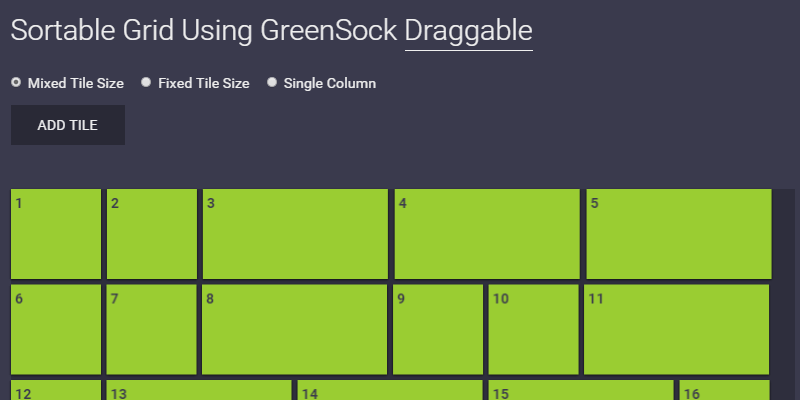

We don’t want it to be relative to anything and we want it to be on top of everything, so let’s give it fixed positioning. The final view that we’d like to have is a fullscreen overlay, so we’ll set it’s width and height to 100%.

Now, let’s take a look at the important overlay division. When hovering over a list item, we’ll simply increase it: The temperature will be semi-transparent and we’ll add a transition for its opacity: In our grid we want them to be positioned absolutely in the lower right corner, appearing a bit cut off: Basically we are using an icon class to add an icon with a pseudo element. You can check out the climacons.css to see which icons we are including. It’s the Climacons Font by Adam Whitcroft. We are including a CSS file for the icon font that we are using. There are three different widths for our grid items, the “default” one with 24% and then the following other two: The list items will have a fluid width and we’ll give them a height of 15em. The unordered list will be centered in its parent and we’ll remove the list style: Note that the CSS will not contain any vendor prefixes, but you will find them in the files. Each of the “day” columns will have some spans which we’ll use for the weekdays, the weather icon and the temperature: Since we chose a dummy weather app as our theme, we will be showing a weather forecast for the next seven days. The overlay will contain a structure that will have a column layout. Inside we’ll add some text and the overlay division. Each list item will have an icon class and an optional “span” class that will control the width of the box. We’ll use an unordered list for the boxes. Then we will animate the clip to reveal all the width and height of the overlay which is our entire viewport:Ĭlicking on the close button will reverse the effect and the overlay will minimize to the list item’s size and disappear. When we click on a box, we’ll use clip: rect() to crop the respective part of the inner fixed element. This element will actually spread over all the page but we won’t see it because the opacity will be set to 0. This is how we’ll do it: we will first create a list of items that will look like metro-style boxes:Įach one of the boxes will contain an element (overlay) that will be of position fixed. Clicking an element will create a cut-out effect, revealing another layer that will expand. The idea is to show some kind of overlay as if it’s actually underneath the respective element.
#Boxgrid codedrop how to
We want to show how to leverage the CSS clip property to make a smooth transition when clicking on a box element.

We are going to create a neat and simple effect for revealing some extra content and expanding a fullscreen overlay. Today we want to explore the practical side of it a little bit more. I am not familiar with the scitools stuff, but ndgrid seems equivalent to meshgrid, while BoxGrid is actually a whole class to help with this kind of generation.Our previous article, Understanding the CSS Clip Property by Hugo Giraudel offers a great overview of the CSS clip property and the rect() function. ZZ = XX + YY # These are equivalent to the atleast_2d example ZZ = XX + YY # These are equivalent to the output of meshgrid The order in which the output are generated is reversed. Mgrid and ogrid are helper classes which use index notation so that you can create XX and YY in the previous examples directly, without having to use something like linspace. YY = YY.T # transpose to allow broadcasting This means you can do XX, YY = numpy.atleast_2d(x, y) When you think about it, meshgrid is a bit superfluous for numpy arrays, as they broadcast. So ZZ contains all the combinations of x and y put into the function. It is used to vectorise functions of two variables, so that you can write x = numpy.array() shgrid is modelled after Matlab's meshgrid command.


 0 kommentar(er)
0 kommentar(er)
